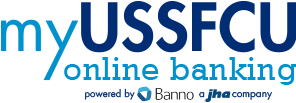Making the Leap: Turning Your Side Hustle into a Full-Time Business
Published: March 12, 2025

If your side hustle is bringing in steady income, taking up more of your time, and showing strong growth potential, it may be time to consider making it your full-time business. Transitioning from part-time entrepreneur to full-time business owner requires financial planning, a solid strategy, and the right mindset.
At USSFCU, we’re here to help you navigate this transition successfully. Whether you're preparing to leave your 9-to-5 or simply exploring the idea, these key steps will set you up for long-term success.
Want to learn more? Join our upcoming webinar, From Passion to Profit: Launching Your Small Business, on March 19. Register here.
Recognizing the Right Time to Transition
How do you know if your side hustle is ready for full-time status?
- Consistent Revenue Growth – Stable or increasing earnings for at least six months
- Time Constraints – Your business demands more hours than you can manage
- High Customer Demand – You’re turning down work or struggling to keep up
- Clear Growth Potential – You see opportunities to expand with more time
Next Steps:
- Track Your Revenue: Ensure financial stability before making the switch.
- Evaluate Time Commitment: If your business is consuming more time than your job, it may be time to shift priorities.
- Assess Market Demand: High customer demand is a strong indicator of future growth.
Financial Planning: Can You Afford the Jump?
Before leaving your full-time job, ensure financial security for the early months of full-time entrepreneurship.
Next Steps:
- Save an Emergency Fund: Aim for at least six months' worth of living and business expenses.
- Calculate Your Breakeven Point: Know the minimum monthly income you need.
- Streamline Expenses: Reduce unnecessary costs to ease financial pressure.
USSFCU Tip: A USSFCU Business Savings Account can help you set aside funds specifically for business operations or emergencies.
Developing a Strategic Business Plan
A clear business plan provides direction and ensures your transition is well-structured.
Next Steps:
- Draft a Business Plan: Outline your mission, audience, products/services, pricing, and revenue goals.
- Set SMART Goals: Establish Specific, Measurable, Achievable, Relevant, and Time-bound objectives.
- Plan for Challenges: Anticipate potential risks and develop strategies to navigate them.
USSFCU Tip: Need help with financial planning? Our Business Advisory Services can guide you through budgeting and cash flow management.
Building Your Brand and Marketing Your Business
A strong brand and marketing strategy are essential for growth.
Next Steps:
- Create a Brand Identity: Develop a logo, brand colors, and a consistent message.
- Optimize Your Online Presence: Ensure your website is mobile-friendly and professional.
- Leverage Social Media & Email Marketing: Engage your audience and build customer relationships.
USSFCU Tip: Need funding for marketing? A USSFCU Business Line of Credit can support branding and advertising costs.
Legal and Administrative Steps
Formalizing your business protects your assets and ensures compliance.
Next Steps:
- Register Your Business: Choose a business structure and file with your state.
- Get an EIN: Apply for a free Employer Identification Number (EIN) through IRS.gov.
- Open a Business Bank Account: Separate business and personal finances for better accounting.
- Consider Business Insurance: Protect your business from potential risks.
USSFCU Tip: Our USSFCU Business Checking Accounts help you manage finances professionally while offering secure payment processing options.
Making the Leap with Confidence
Turning your side hustle into a full-time business is a big step, but with careful planning, financial preparedness, and the right support, success is within reach.
Want expert guidance? Join our upcoming webinar, From Passion to Profit: Launching Your Small Business, on March 19.
Register now
Article content is provided for informational purposes only.
All loans are subject to credit approval. Rates and/or credit limits are based on creditworthiness, income and debts. Not all applicants will qualify.



